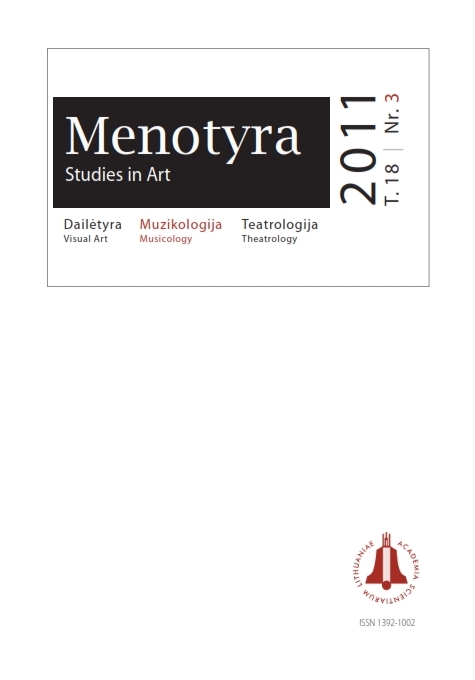Lietuvių stygininkų kultūra JAV
String instrument culture of Lithuanians in the USA
Author(s): Ramunė Kryžauskienė, Jūratė ČitienėSubject(s): Fine Arts / Performing Arts, Music, Migration Studies
Published by: Lietuvos mokslų akademijos leidykla
Keywords: Lithuanian string instrument culture; Lithuanian emigrants; concerts; music; composers, repertoire
Summary/Abstract: The present article analyses Lithuanian emigrants’ culture of string instruments in the USA and discusses the activities of native-born Lithuanians as well as the development of artistic activities of World War II emigrants at DP (Displaced Persons) camps and their integration into the USA music culture; a lot of attention is drawn to analyse (it has not been implemented till now) the artistic activities of a renowned violinist E. Kuprevičiūtė. The traditions of concert life, the repertoire trends and the place of violinists in the context of emigrants’ music culture are described.Lithuanian musicians, who had come to the USA before World War II, managed to more or less successfully develop their artistic activities. Some Lithuanian violinists graduated from music colleges and higher music schools in the USA where they acquired Bachelor’s and Master’s degrees, performed favourably with symphony and chamber orchestras in different cities, played as soloists and carried out pedagogical activities. Highly motivated educationalists delivered lectures at famous music schools: J. Jakaitis (a violinist) taught at L. Beethoven Conservatoire set up by A. Pocius; A. Draugelis (a violinist / composer) was in charge of the Department of Music at California Institute of Technology; M. Digrytė worked in Hasbrouck at music school of further education (New York) and the like. When World War II was coming to an end, some prominent Lithuanian string players emigrated to the USA and developed their professional skills far from the Motherland. They continued their music career, started in Lithuania and cultivated at DP camps. Many Lithuanian string players realised themselves by performing in orchestras: I. Vasyliūnas (a violinist) played in symphony orchestras of Boston and Cambridge; P. Armonas (a cellist) played in symphony orchestras in the south-western and northern suburbs of Santa Barbara, Rochester, Florida and Chicago. Other violinists played in the orchestras of Elizabeth Philharmonic, Newark, NY symphony, Cleveland, Waukegan, Chicago Youth, Civic and other ones; it exhibits a highly professional preparation of Lithuanian string players.Quite many Lithuanian string players organised concerts for the representatives of Lithuanian community, played in various chamber ensembles – duos, trios, quartets. Some performers combined successfully their concert activities and performance in orchestras with private lessons at their established music schools-studios.With the help of active string players such as I. Vasyliūnas, E. Kuprevičiūtė and P. Armonas the Lithuanian string culture became productive: it motivated Lithuanian concert life, promoted professional artistic activities and familiarized foreigners with the values of Lithuanian music art.The performers’ merits especially consisted in propagating Lithuanian chamber instrument music and in stimulating the creation of new opus. Consequently, there appeared mature works by V. Jakubėnas, K. V. Banaitis, J. Gaidelis, J. Kačinskas, J. Švedas. Furthermore, active concert activities encouraged American composer J. Bavicchi to create Sonata-fantasia on the themes of Lithuanian folk songs.A part of Lithuanian violinists exchanged music art for better paid jobs or a performer’s job was complemented by new specialisation. A. Jaras (a violinist) familiarized with piano tuning and regulating methods and made twelve discoveries; S. Kairys combined music performances with a position of a chemist, while others supplemented their activities with specialisation of a choir conductor, an organiser of radio programmes or a composer.
Journal: Menotyra
- Issue Year: 18/2011
- Issue No: 3
- Page Range: 257-269
- Page Count: 13
- Language: Lithuanian

